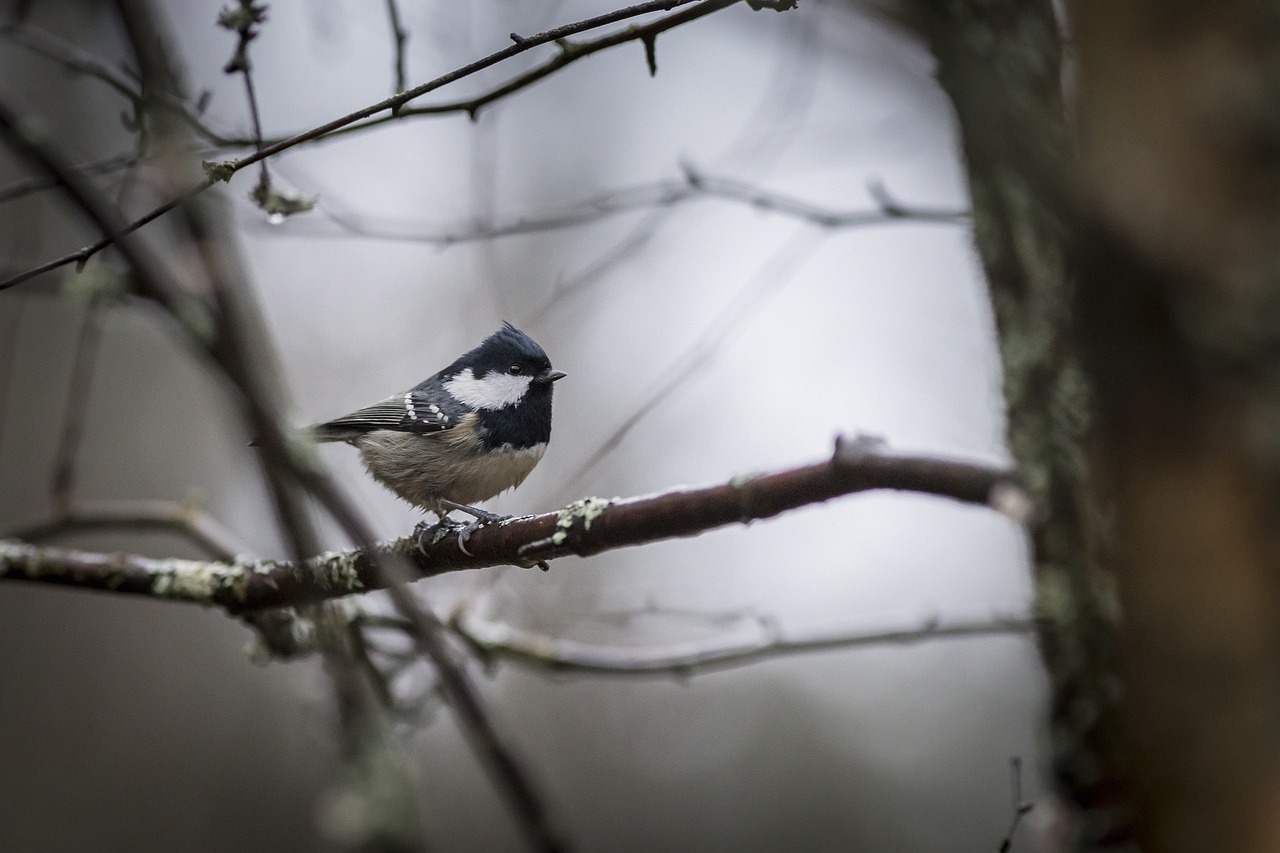The Coal Tit, scientifically known as Periparus ater, is a small passerine bird belonging to the tit family, Paridae. Here are some key features and characteristics of the Coal Tit:
- Appearance:
- Size: The Coal Tit is a small bird, measuring about 10 to 11.5 centimeters (4 to 4.5 inches) in length, with a wingspan of approximately 17 to 21 centimeters (6.7 to 8.3 inches).
- Color: It has a distinctive black head, white cheeks, and a prominent white nape patch on the back of the neck. The upperparts are a dull bluish-gray, while the underparts are a pale grayish-white.
- Markings: It has a small, slender black bill and a relatively long tail with a white tip. The wings display two white wing bars, which are noticeable in flight.
- Habitat:
- The Coal Tit is typically found in coniferous and mixed forests, but it also inhabits deciduous woodlands, parks, and gardens, especially during the winter when it may visit feeders.
- It prefers areas with dense tree cover, often favoring pine, spruce, and fir forests.
- Distribution:
- This species is widespread across Europe, North Africa, and parts of Asia. It is a common resident bird throughout much of its range.
- In the British Isles, the Coal Tit is a familiar sight in coniferous woodlands and gardens.
- Behavior:
- Foraging: Coal Tits are active foragers, often seen flitting about in trees in search of food. They primarily feed on insects, spiders, and other small invertebrates during the breeding season. In autumn and winter, they also consume seeds, especially from conifers.
- Caching: Like many tit species, Coal Tits are known to cache food, storing seeds in crevices and tree bark to retrieve later in the winter months.
- Social Structure: They are social birds, often forming mixed-species foraging flocks in the non-breeding season, which helps reduce the risk of predation and increases foraging efficiency.
- Breeding:
- Breeding season typically starts in April and can continue through June. Coal Tits usually have one or two broods per year.
- Nests are built in tree holes, nest boxes, or other cavities, often lined with moss, hair, and feathers.
- The female lays a clutch of 7 to 11 eggs, which she incubates for about 14 to 16 days. Both parents share in feeding the chicks once they hatch.
- Vocalizations:
- The Coal Tit has a distinctive and varied vocal repertoire. Its typical song is a high-pitched, rapid “tee-tee-tee” or “see-see-see” sound.
- Calls include a variety of high-pitched notes and trills, often used to communicate with other members of its flock.
- Conservation Status:
- The Coal Tit is currently classified as Least Concern by the IUCN due to its wide distribution and large population.
- It is a resilient species that has adapted well to a variety of habitats, including urban areas.
- Interesting Facts:
- The white nape patch on the back of the Coal Tit’s neck is one of its most distinguishing features, making it easily recognizable among other tit species.
- In winter, Coal Tits often join mixed-species flocks, which can include other tits, goldcrests, and treecreepers, allowing them to benefit from increased vigilance and foraging opportunities.
In summary, the Coal Tit (Periparus ater) is a small, agile bird with distinctive markings and a preference for coniferous forests. Its active foraging behavior, food caching habits, and social nature make it an interesting and adaptable species. Widely distributed and common in many parts of its range, the Coal Tit is a familiar sight and sound in European and Asian woodlands.
Visited 824 times, 3 visit(s) today
Views: 1216
Subscribe to the newsletter:
